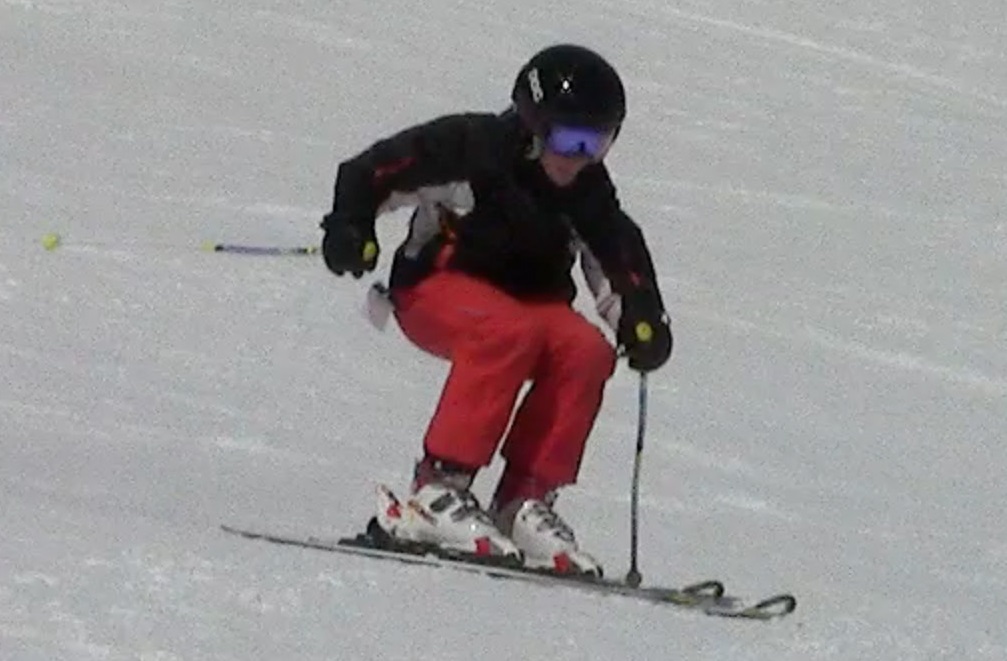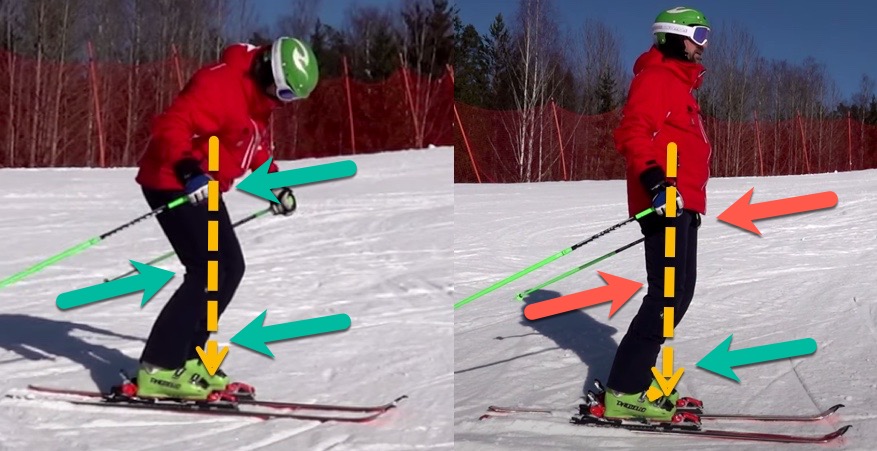Stance
Pub
Share
Stance refers to the way we stand on the skis and a good stance on skis is critical for balance and performance. Stance is not a static notion, because our relationship to the skis and the slope changes throughout the turn, but rather stance describes an average, a target, a "home base" we tend to find ourselves in more often than not, especially between turns.
While the stance should be overall athletic, a narrow stance promotes mobility while a wide stance promotes stability, too many error on the side of stability, forgetting that skiing is more like dancing than sumo wrestling, see Stability with mobility and Skiing - the wide stance debugged.
Some aspects of stance, to consider:
- width - are the feet quite close or really far apart?
- pizza - are the skis really parallel, in a constant pizza slice or just all over?
- fore/aft - are we putting more pressure on the toes or more on the heel, or just about in the middle?
- shuffled - is one ski well ahead of the other, or are they rather even?
- tall - is the body really tall, with long legs, or too low and flexed, or just about right?
- stiff - is the body really stiff, making it hard to balance or is it relaxed and flexed at all major joints, ready to react?
- hunched - do we hunch forward at the waist at any point in the turn, or is the body fairly upright and stable?
Here's a tall stance, typical for skiing green runs - contrast the apparent immobility with the more dynamic blue stance above:
And here's a typical expert stance, quite low, while carving black runs:
While you may think this kind of stance puts a big strain on the legs, in reality there is no weight on the legs right now, as the skier got a lot of performance from the previous turn and is Floating between turns.
Hunching forward
Hunching forward is usually a sign that the boots are not setup right. Could be that the cuffs are too upright, too stiff or such.
It also can be how some try to get more forward, but that's not how it works - if you hunch forward at the waist, your butt moves back to compensate so you end up in the same place
Bend in all joints
A good stance should have some bend in most relevant joints:
Talks and sessions to work on stance:
Drills:
You need to log in to post a comment!




